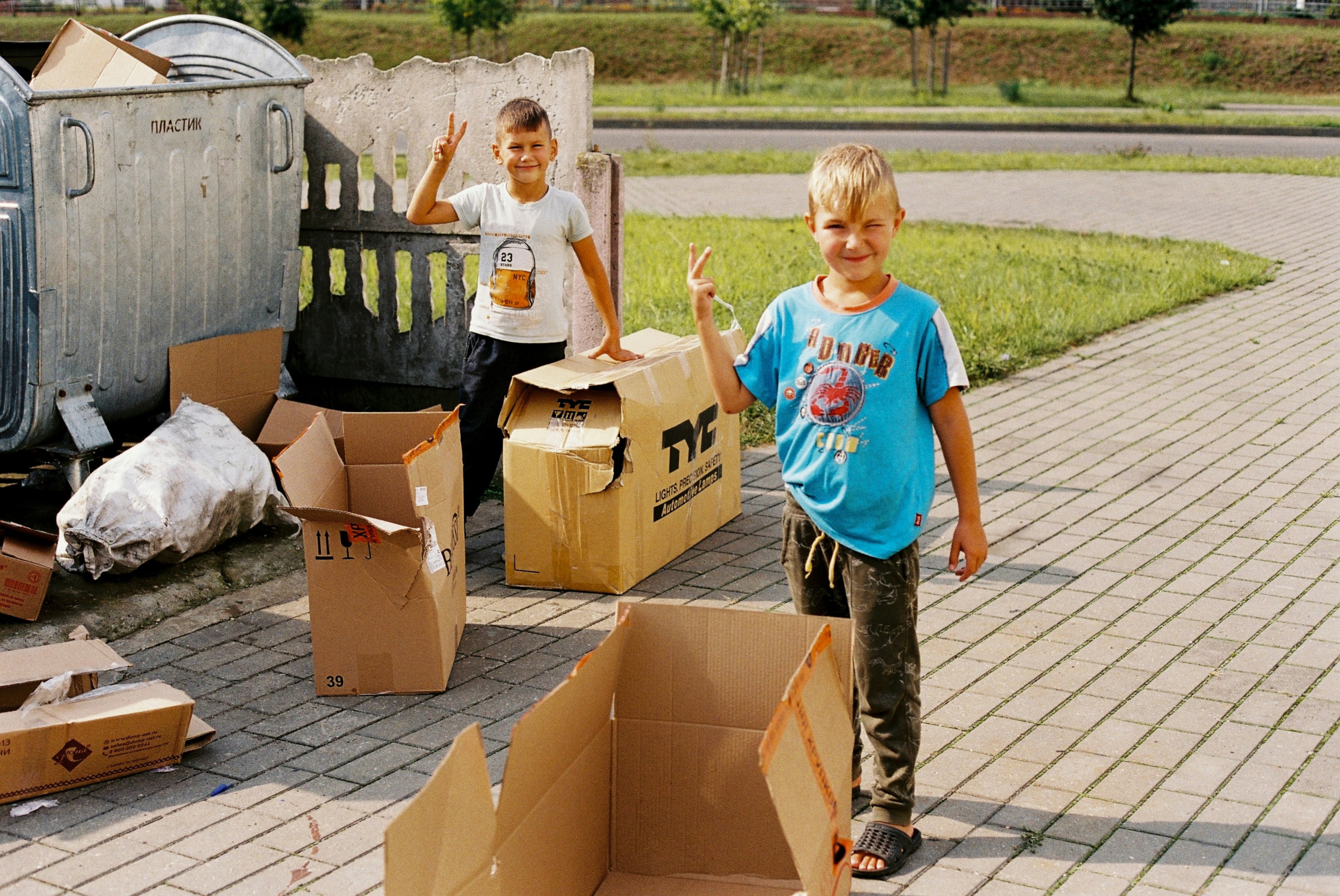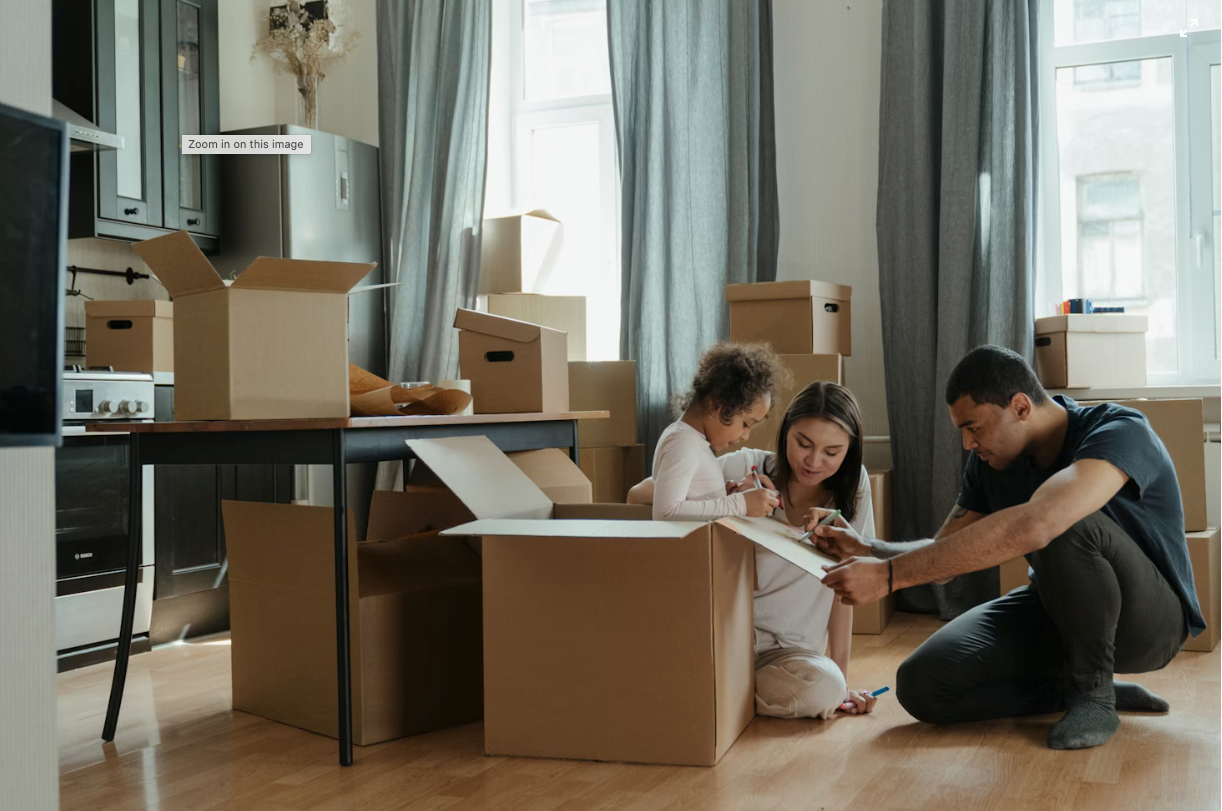Moving with kids can feel like juggling a thousand things at once, boxes, logistics, and big emotions for both parents and children. Questions like, “Will I make new friends?” or “Why did we have to leave?” often arise. Whether you’re relocating across Edmonton or just down the block, supporting your children through the transition is key to making the move a positive experience.
In this post, we’ll walk through family-focused moving tips to help your kids adjust, stay grounded, and feel excited about their new home. We’ll also share how the team at Action Moving & Storage works to make family moves as smooth and stress-free as possible.
Introduction to the Moving Process
Moving to a new house is a big event for any family, and for younger kids, it can feel like a truly daunting task. The moving process brings a whirlwind of changes, new routines, a new city or community, and a new house to call home. It’s important to remember that kids experience these changes differently than adults, and what might seem exciting to you could feel overwhelming to them.
One surefire way to make the transition easier is to involve your kids in the process from the very beginning. Take time to see things from your child’s perspective and include them in the decision-making process where possible. Whether it’s choosing their new room, exploring the new neighborhood together, or simply talking about what to expect, involving kids helps them feel valued and more in control. By making the move a family effort, you can turn a potentially stressful experience into an adventure that everyone can share.

Key Takeaways
- Involving kids in the moving process can ease anxiety and help them feel included.
- Making the maintenance of familiar routines the biggest priority helps children stay grounded before and after the move.
- Talking openly about the move, encouraging questions, and validating emotions are essential for emotional wellbeing.
Understand the Emotional Impact of Moving on Kids
Kids often process change differently than adults. The impact of moving can vary greatly depending on a child’s age, as each age group faces unique challenges and opportunities during relocation. A move might mean leaving behind close friends, a favorite park, or a trusted teacher. It’s important to acknowledge these feelings rather than dismiss them. Considering the move from the child’s perspective can help parents better support their emotional needs. Moving can also affect a child’s relationship with parents, step-parents, or other family members, so it’s important to check in on these dynamics. Children may feel stressed during the transition, and parents should be attentive to signs of stress.
Common Emotional Reactions:
- Anxiety about the unknown
- Sadness over leaving friends or familiar places
- Fear about fitting in at a new school
- Regression in behavior (especially in younger children)
Create space for your kids to express their feelings and ask questions. Reassure them that their emotions are normal and that you’re in this together.
Get Kids Involved in the Moving Process
Making your children active participants in the move can give them a greater sense of control. Creating special moving rituals or activities, such as making a moving binder or letting them decorate moving boxes, can help children feel included.
By involving kids in the process, children learn valuable skills about adapting to change and managing new situations.
Effective parenting during a move involves supporting children emotionally and practically throughout the process.

Let Them Pack Their Own Room
Even little kids can help pack stuffed animals, books, or art supplies. This gives them a sense of ownership and involvement in the transition.
Encourage your child to include a special toy in their moving box, as having this comfort item can help them feel more at ease during the move.
Show Them the New Neighborhood
Take a walk or drive through the new place and explore the new town together before moving day. Point out all the things that make the area exciting, such as parks, shops, and fun activities. Visit local parks, schools, or spots they’ll enjoy to build excitement and familiarity.
Create a Moving Countdown Calendar
Use a visual calendar to help your child understand when the move is happening. Mark special milestones to help them feel prepared and included.
Using a countdown calendar can also support your child’s emotional adjustment in the weeks leading up to the move.
Pre-Move Preparation
Before you start packing boxes, it’s essential to prepare your kids for all the changes ahead. Talk openly about the move—discuss the new house, the new location, and what life might look like in your new community. Encourage your kids to share their thoughts and feelings, and listen carefully to any worries or questions they might have. This helps them feel heard and supported during a time of uncertainty.
For older kids, getting involved in packing up the old house or helping with preparations can be empowering. Let them help sort through their belongings, decide what to bring, and even assist with getting the house ready for sale. This hands-on involvement can make the moving process feel less intimidating and more like a team effort. Above all, keep your child’s safety in mind—make sure the environment is secure and that kids know what to expect on moving day. By preparing together, you’ll help your kids feel more confident and ready for the big transition.
Moving Day Logistics
When moving day arrives, having a solid plan can make all the difference for your family. Start by packing a special box just for your kids, filled with their favorite toys, stuffed animals, books, and snacks. This comfort kit will help keep them occupied and provide a sense of familiarity during the hustle and bustle of the move.
If possible, arrange for your kids to spend time with trusted friends or family members while the moving process is underway. This gives them a break from the chaos and a chance to relax. Remember to schedule regular breaks throughout the day so everyone can rest and recharge. It’s also important to think about how your kids will stay connected with old friends, set up a plan for video calls or future visits to help maintain those important relationships. By focusing on your child’s comfort and emotional needs, you’ll help make moving day a smoother, more positive experience for everyone.
Important Documents and Administration
Amidst all the packing and planning, don’t forget about the important documents that come with moving to a new home. Keeping track of paperwork like your new address, school records, and insurance information is crucial for a seamless transition. Designate a safe, easily accessible spot for all these documents so nothing gets lost in the shuffle.
Involve family members in the process, older kids can help organize files or check off items on a moving checklist. This not only lightens your load but also teaches kids valuable lessons about organization and responsibility. Make sure school records are transferred promptly and that everyone knows where to find important information when needed. Staying organized will help your family settle into your new home with less stress and more confidence.
Maintain Routines Before, During, and After the Move
Kids thrive on consistency, especially during big life changes. Sticking to daily routines as much as possible can provide much-needed stability.
- Keep mealtimes, bedtimes, and screen time consistent
Maintaining routines is especially important if a move is happening in the near future. - Maintain morning and evening routines (same stories, same toothbrush song, etc.)
- If they’re in school, try to move at the end of the school year to minimize disruption for children
After the move, re-establish routines quickly to help them settle in faster.
Help Kids Adjust After the Move
As a parent, your support and presence are crucial in helping your children adjust to the new environment.
Once you’re in the new house, the adjustment period begins—and it’s just as important as the move itself.
Creating a family feel in your new home by establishing routines and engaging in family activities can help children settle in and feel more comfortable.
Remember, both parents and children may be feeling overwhelmed or stressed after the move, so it’s important to support each other during this transition.

Unpack Their Room First
Prioritize setting up kids rooms first by arranging their rooms with familiar items like their bedspread, toys, and posters. Recreate elements from their old room to provide comfort and maintain a sense of familiarity. A familiar space offers comfort and makes the new house feel more like home.
Encourage Social Connections
Help them meet new neighbors, enroll them in activities, or arrange playdates. Making new friends will help ease the transition faster than anything else.
Parents can also encourage their children to explore features of their new homes and arrange ways for kids to spend time with new friends, helping them feel comfortable and connected in their new environment.
Talk Often and Listen More
Check in regularly to see how your child’s feeling about the new home, school, or routine. Some kids may not open up right away, so keep the lines of communication open.
Staying Connected
After the move, helping your kids stay connected with their old friends and community is key to a successful transition. Schedule regular video calls, send letters, or plan visits back to your old town so your kids can maintain those special relationships. At the same time, encourage your children to join clubs, sports teams, or fun activities in your new community—this is a great way for them to meet new friends with similar interests and start building positive associations with their new home.
Don’t forget to prioritize family time as well. Spend time together exploring your new neighborhood, trying out local ice cream shops, or simply enjoying your new space as a family. These shared experiences help create a sense of belonging and make your new house feel like home. By following these helpful tips, you’ll support your kids as they adjust, helping them thrive in their new environment and making the moving process a positive chapter in your family’s story.
Moving with Kids? Choose Movers Who Understand Families
Relocating with children adds complexity to any move, but you don’t have to do it alone. At Action Moving & Storage, we specialize in residential moves for families across Edmonton and the surrounding areas. Our team helps take the stress out of moving so you can focus on what matters most, your family.
Whether you’re relocating around the corner or preparing for a big family transition, we’re here to help make the move feel manageable (and maybe even exciting!). Check out our FAQ page for additional moving tips for the whole family!
Summary: Moving Tips for Families
Moving with kids can be a challenge, but it’s also an opportunity for growth, bonding, and a fresh start. By involving your children in the process, sticking to routines, and addressing their emotional needs, you’ll help them adjust and feel secure in their new home.
And with Action Moving & Storage by your side, you can rest easy knowing you’ve got a team that understands the unique needs of families on the move.
Need help planning your family move? Get a free quote from Action Moving & Storage today, because every family deserves a stress-free start in their new home.